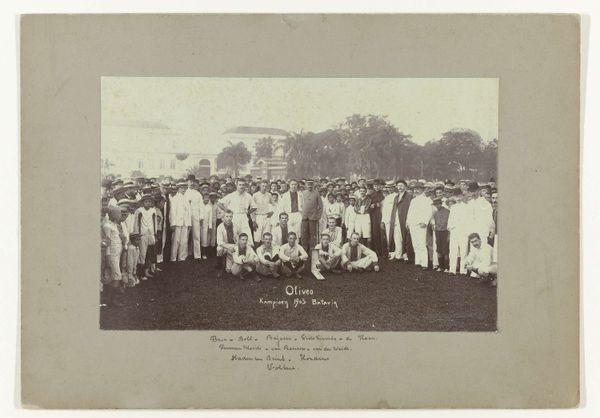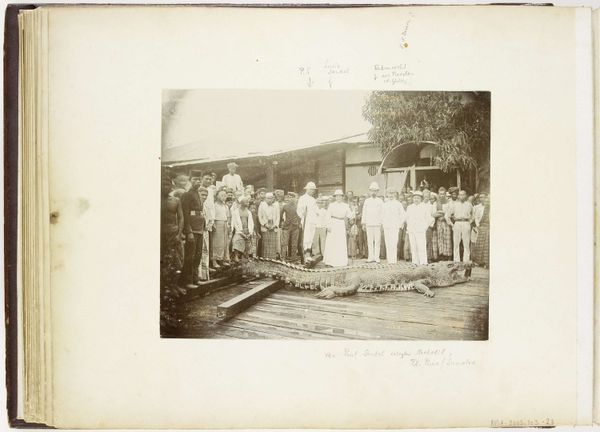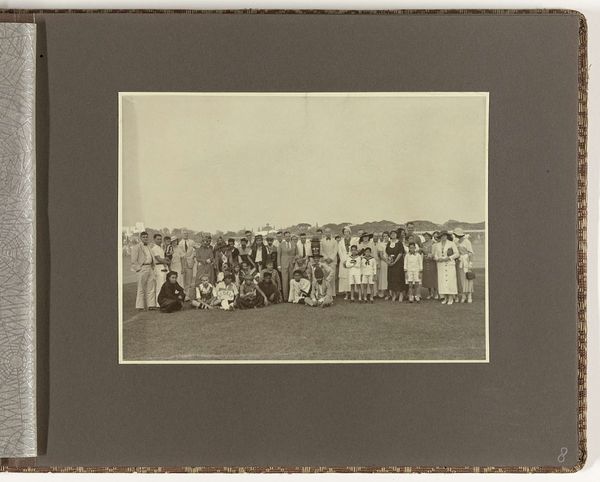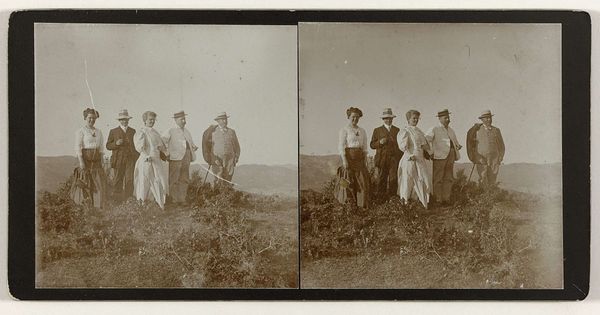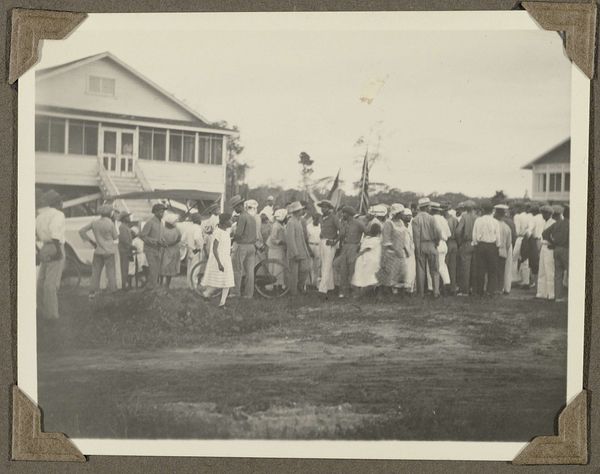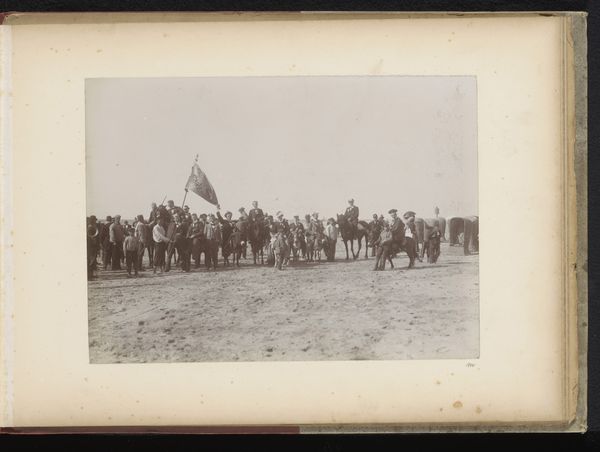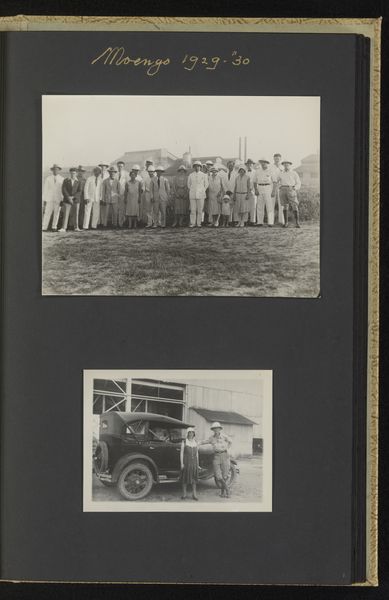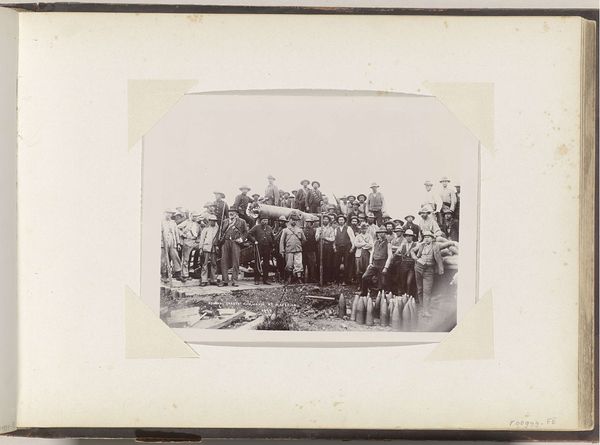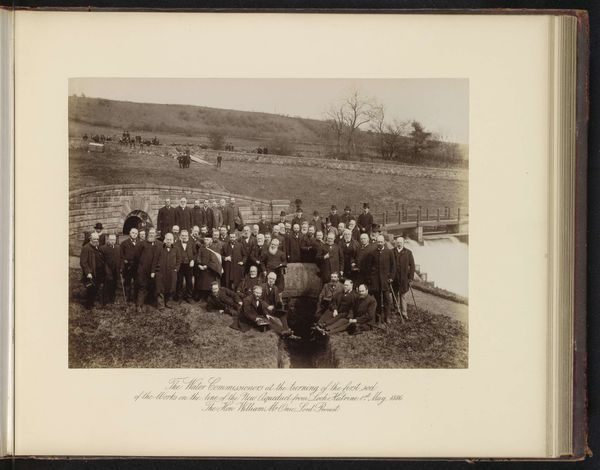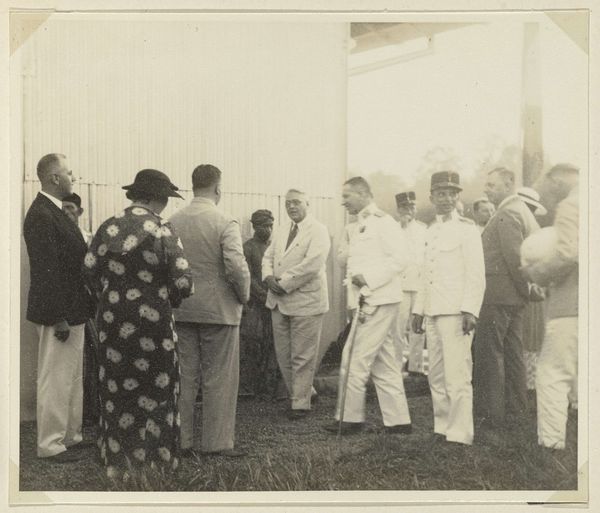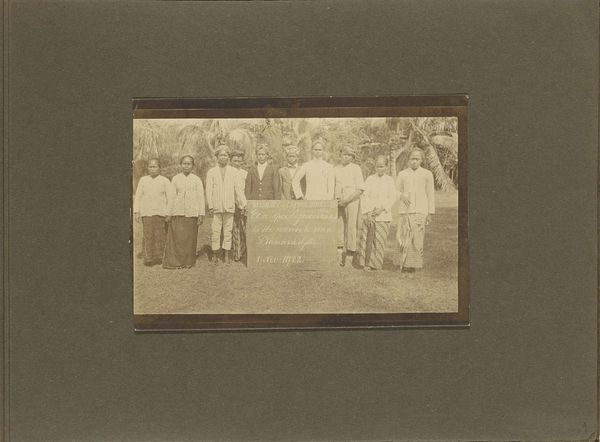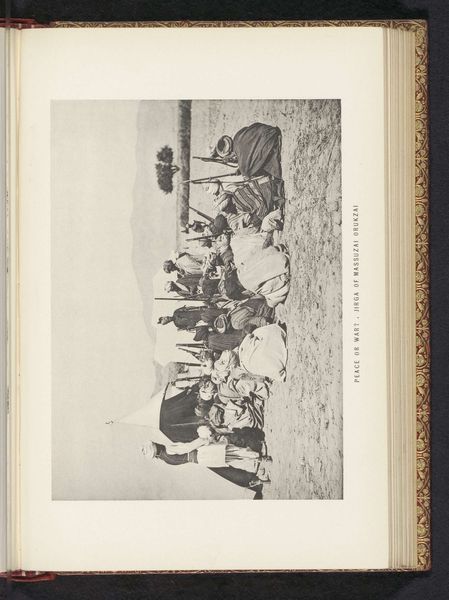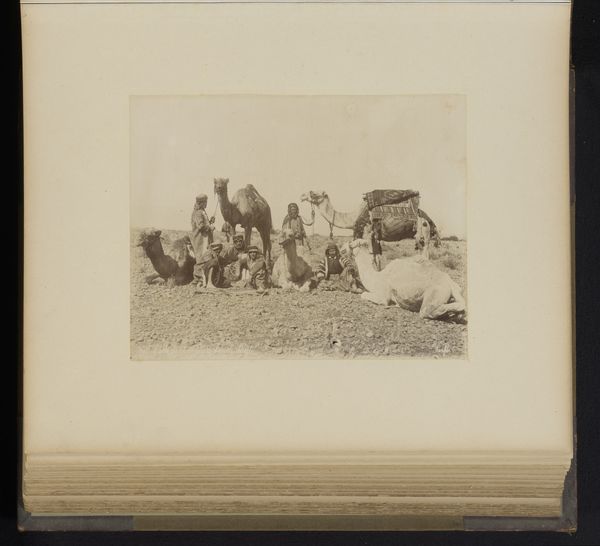
Gekostumeerde voetbalelftallen van het Centraal Kantoor voor de Statistiek te Batavia Possibly 1935
0:00
0:00
#
aged paper
#
toned paper
#
photo restoration
#
ink paper printed
#
parchment
#
old engraving style
#
personal sketchbook
#
19th century
#
watercolour illustration
#
watercolor
Dimensions: length 132 mm, width 181 mm
Copyright: Rijks Museum: Open Domain
Curator: What a peculiar scene! The monochrome gives it a timeless quality, but there’s something unsettling about this line of costumed figures…a certain awkwardness. Editor: Indeed. The image before us is a photograph titled "Gekostumeerde voetbalelftallen van het Centraal Kantoor voor de Statistiek te Batavia," which roughly translates to "Costumed Football Teams of the Central Bureau of Statistics in Batavia," and its date is approximated to 1935. Curator: The masks…or are they costumes? The rabbit, the vaguely "native" headdresses... There's a carnival atmosphere but also a suggestion of something other than pure festivity. Symbolically, what do you read from this dressing up? Editor: Costume and masquerade were potent tools for social commentary and even resistance during the colonial period, providing opportunities to temporarily invert or question the established social hierarchy and political dynamics. Bureaucrats enacting such charades can hint at the very tensions simmering beneath the surface. Curator: I agree; consider also how certain figures become tropes and emblems within popular imagery. What appears exotic might easily solidify into an easily digestible type. I wonder if they felt they were engaging with their colonial counterparts respectfully. Editor: Given that Batavia is now Jakarta, and it was then the capital of the Dutch East Indies, these costumes may reflect the social dynamics of the period. Curator: To my eyes, some look satirical, others ethnographic. What narrative were these figures trying to evoke and is that a form of asserting or undermining power dynamics in that landscape? The potential power in such theatrical acts of identity construction are worth noting. Editor: Absolutely, there is certainly an element of performance. In short, it’s important to view such images not just as a snapshot of people in costumes but as carefully orchestrated political theater. This "play" likely held multiple meanings for different spectators then. And now for us. Curator: I see how looking beneath the image yields narratives layered with cultural, and possibly quite unsettling dynamics. Editor: Yes, precisely; this photo compels us to look deeper into that complex historical interplay between the colonizers and the colonized. The political dimensions are far from skin-deep.
Comments
No comments
Be the first to comment and join the conversation on the ultimate creative platform.
